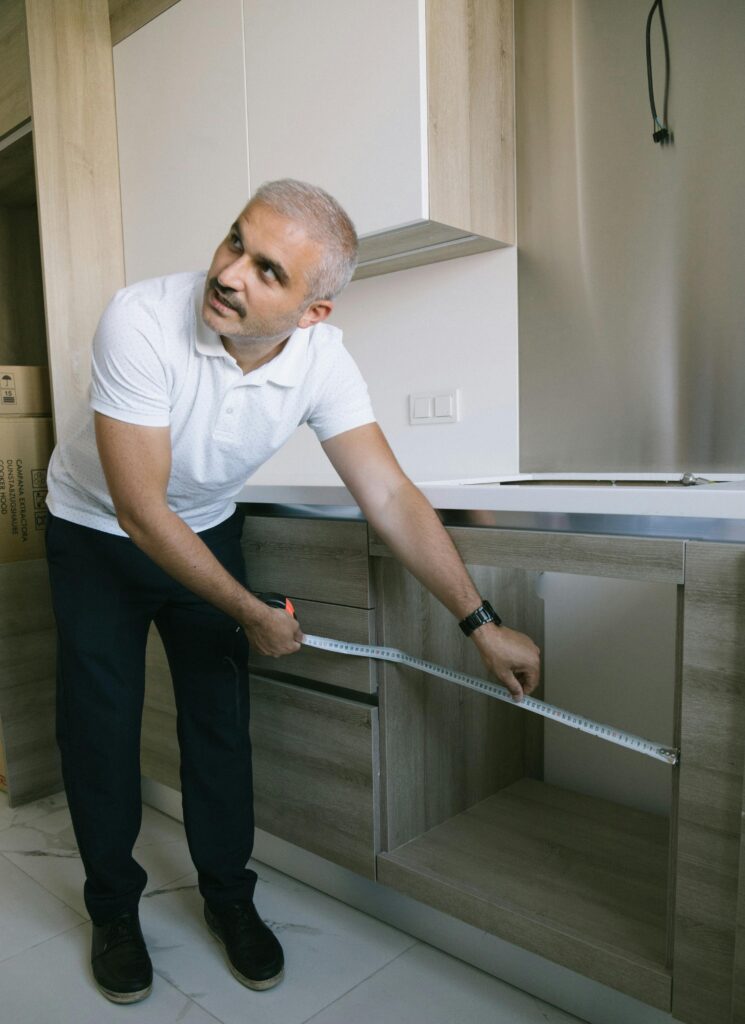Introduction
Remodeling your kitchen yourself can be a fulfilling and cost-saving project, but it comes with its challenges. A DIY kitchen remodel requires meticulous planning, the right tools, and an understanding of common pitfalls to ensure success. From avoiding kitchen remodeling mistakes to implementing effective kitchen renovation DIY techniques, this guide will walk you through every step. Learn how to design a functional layout, choose durable materials, and handle tricky installations. With the right approach, you can transform your kitchen into a stylish and efficient space without breaking the bank. Taking on a DIY kitchen remodel can be an exciting and cost-effective way to refresh your space. While it requires time, effort, and a fair share of planning, the sense of accomplishment and savings make it worthwhile. In this guide, we’ll explore the best practices for a successful DIY remodel, common pitfalls to avoid, and how to bring your dream kitchen to life.
Revamp Your Kitchen: DIY Remodeling Ideas for Budget-Friendly Transformations

A DIY kitchen remodel is an excellent way to revitalize your space while saving money. By handling the work yourself, you can create a kitchen that reflects your personal style and meets your functional needs. Start by planning a layout that optimizes the kitchen work triangle—sink, stove, and refrigerator—for better efficiency.
When selecting materials, focus on durability and aesthetics. For example, opt for quartz countertops for their low maintenance and long-lasting appeal. Installing peel-and-stick backsplash tiles or painting your cabinets are easy DIY tasks that can make a big impact.
While tackling your remodel, avoid common mistakes like improper measurements or skipping necessary prep work. With careful planning and execution, your DIY project can turn into a rewarding experience and a stunning kitchen transformation.
Planning Your DIY Kitchen Remodel
Setting a Realistic Budget
Budgeting is the cornerstone of any successful remodel. Start by calculating the costs of essential materials like cabinets, countertops, and appliances. Allocate at least 10–15% of your budget for unexpected expenses, such as fixing hidden damage.
Designing Your Ideal Kitchen
A functional layout is key to a practical kitchen. Utilize online design tools or apps to visualize the space. Design Your Kitchen Layout Around the Work Triangle for Maximum Efficiency: Sink, Stove, and Refrigerator Placement Essentials
Gathering Permits and Understanding Regulations
Before swinging a hammer, check local building codes. Permits are often required for electrical, plumbing, or structural changes. Skipping this step can lead to fines and complications down the line.
Essential Tools and Materials for a DIY Remodel
Must-Have Tools for Demolition and Installation
Equip yourself with essentials like a power drill, saw, level, and tape measure. For larger projects, consider renting tools like tile cutters or nail guns. Don’t forget safety gear, including gloves and goggles.
Choosing High-Quality Materials
Invest in durable materials. For instance, opt for plywood over particleboard for cabinets and quartz over laminate for countertops if your budget allows. These choices ensure your remodel lasts for years to come.
Step-by-Step DIY Kitchen Remodel Guide
Demolition
Begin by removing old cabinets, countertops, and fixtures. Turn off water and electricity to avoid accidents. Rent a dumpster for easy debris disposal.
Addressing Electrical and Plumbing Needs
Some tasks, like rewiring or relocating pipes, may require professional assistance. Install new fixtures and appliances carefully, following manufacturer instructions.
Installing Cabinets and Countertops
Ensure your cabinets are level before securing them to the wall. Secure Your Work with Clamps for Precise Fastening and Stability. Cut and install countertops with precision to avoid gaps.
Flooring and Backsplash
For DIY-friendly flooring, consider vinyl or laminate planks that click into place. Align your backsplash tiles meticulously to achieve a polished look.
Finishing Touches
Paint walls and trim to complement your design. Install cabinet hardware and add decorative elements like pendant lights or open shelving for a personalized touch.
Common DIY Mistakes to Avoid
Underestimating the Project Timeline
DIY remodels often take longer than anticipated. Avoid frustration by setting realistic timelines and preparing for delays.
Skipping Necessary Prep Work
Rushing through prep work can lead to costly mistakes. Always measure carefully and prepare surfaces before installation.
Ignoring Safety Precautions
Wear protective gear, ensure proper ventilation, and use tools safely to avoid injuries.
Benefits of DIY Kitchen Remodels
A DIY remodel saves money and allows you to customize your kitchen according to your style. It also provides a sense of accomplishment, as you can proudly showcase your work.
When to Call a Professional
Know your limits. Tasks involving complex plumbing, gas lines, or electrical wiring should be left to professionals. They’ll ensure safety and compliance with local codes.
Conclusion
Embarking on a DIY kitchen remodel can be both rewarding and challenging. With proper planning, the right tools, and a focus on safety, you can transform your kitchen into a space that suits your lifestyle. Remember to enjoy the process and learn from any hiccups along the way.
FAQs
1. How long does a DIY kitchen remodel typically take?
A DIY kitchen remodel can take 4–8 weeks, depending on the project scope and your availability.
2. Can I remodel my kitchen without replacing cabinets?
Yes, consider painting or refacing cabinets for a cost-effective refresh.
3. What’s the average cost of a DIY kitchen remodel?
Costs vary but typically range from $5,000 to $15,000, depending on materials and scope.
4. Do I need a permit for a DIY kitchen remodel?
Permits are often required for electrical, plumbing, or structural changes. Check local regulations.
5. What are the best materials for a DIY kitchen remodel?
Durable materials like quartz countertops and solid wood cabinets are great choices for long-lasting results.
6. What are the most common mistakes to avoid in a DIY kitchen remodel?
Common mistakes include:
- Skipping proper measurements leads to misaligned cabinets or countertops.
- Neglecting prep work, like cleaning and priming surfaces.
- Overlooking necessary permits for electrical or plumbing changes.
- Underestimating the time and effort required to complete the project.














